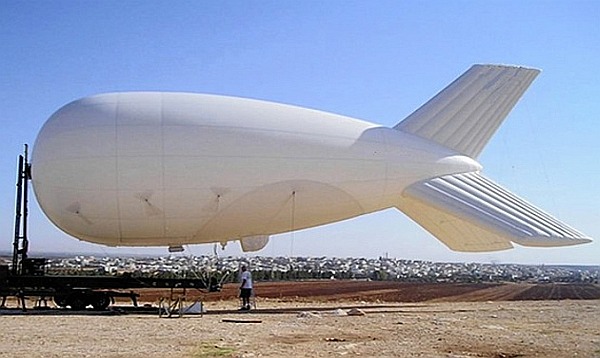Brownsville, Texas - With the US conflicts in the Arab world drawing to a close, the government is using some of the technology honed on battlefields overseas at home.
Over the next few weeks, the US military will begin to test a 72-foot-long, unmanned surveillance blimp in southern Texas that could be used to spot drug traffickers and undocumented immigrants entering the country via its border with Mexico.
"The equipment being considered will no longer be needed by the military as they are withdrawn from Iraq and Afghanistan," Customs and Border Protection wrote in a press release. "However, some of the equipment may have significant benefits to the protection of the United States when deployed in a homeland security situation."
The so-called "floating eye" is part of a wider strategy by border officials and the military to bump surveillance on the US-Mexico border along with finding other uses for the high-tech equipment coming back to the US. Besides blimps, officials have explored over 100 types of military gear for use along the border, including unmanned drones and hand-held instant-translation devices.
After testing a program quietly in the Bahamas for the last 18 months, the Department of Homeland Security plans to start unmanned surveillance flights into the Caribbean and the Gulf of Mexico in a move that would more than double miles now covered by the department's fleet of nine surveillance drones. Previous technologies in the area have failed to meet the surveillance requirements.
"US Customs and Border Protection constantly monitors activity and trends of Transnational Criminal Organizations and works closely with other federal, state, local, tribal, and international partners to combat smuggling in the source and transit zones," a United States Customs and Border Protection (CBP) spokesperson said. "This is a perfect example of a bi-national, multi-agency, law-enforcement approach to address drug smuggling in the Caribbean."
The blimps being tested in Texas’ Rio Grande Valley will consist of large balloon like devices called "Aerostats" that contain sensor equipment, allowing operators to view activity along the border.
The CBP is taking careful steps in implementing this program, especially in light of last year’s billion-dollar SBInet debacle, in which the government canned the electronic border surveillance system after officials concluded it wasn’t functioning as it had hoped for.
"The evaluation will include various activities to help determine if the equipment has a useful purpose in assisting CBP," the spokesperson said, adding that the tests in Texas may be only one of many. "The agency must also determine if the use of the equipment is economically feasible."
The blimps have been used for years in the skies over Kabul and other military bases in Afghanistan and Iraq, where they monitor for insurgent movements, road side bombs and troops in battle. The blimps - which can cost $1 million to $5 million each – are part of the enormous flow of equipment headed back to the US over the next two years.
"The Defense Department runs one of those blimps over Cudjoe Key in the Florida Keys, and has done so for 20 plus years," said Adam Isacson from the Washington Office on Latin America. "There it's pretty uncontroversial because it's monitoring maritime and aerial traffic over international waters and perhaps Cuba. The participation of the Defense Department may raise eyebrows, but it fits within a legal authority to monitor suspected overseas drug trafficking that DOD has had since 1989."
In general, Isacson said that the use of blimps and drones is indicative of the military cutback overseas and is a sign of things to come back in the US.
The drones have been criticized by civil liberties groups who say they are a costly endeavor that require far too many people to operate.
"This is, though, an example of the Defense Department increasing its capacities at the border - or at least lending them to civilian law enforcement - as draw downs in Iraq an Afghanistan free up more resources," Isacson added. "We're likely to see more of that."


